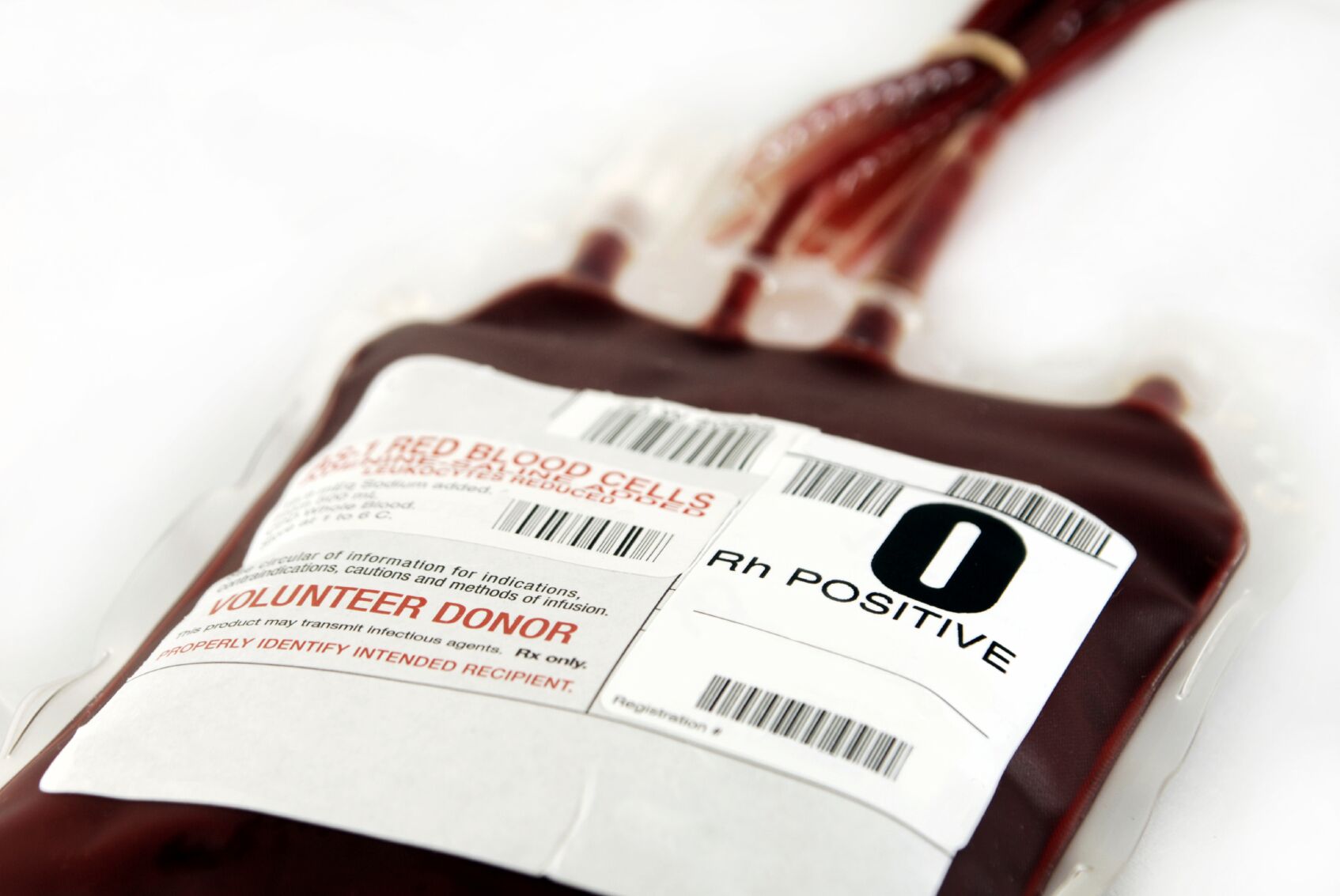
Donating blood is one way in which people help in disaster situations. From 9/11 to the 2009 Victorian Bushfires, to Australia’s most recent devastating bushfire season, those wanting to help respond by rolling up their sleeves and donating the gift of life.
So, what is happening now? It may appear from the frequent calls for donations that people are reacting differently to the coronavirus pandemic. It is true that in every country fewer regular donors are giving than usual. However, in contrast to other disaster situations, this may be the result of new postponement criteria to ensure donor and patient safety during the pandemic or due to rules put in place for certain groups to self-isolate as much as possible. Donating blood is considered an essential activity, so this means that we need those who can donate to step up and give.
Are people ready to roll up their sleeves? Well if we look at Google search data since the 12th March 2020 when the World Health Organization classified COVID-19 as a pandemic, we can see that across the world searches for ‘blood donation’ and ‘can I donate’ blood rose dramatically and have remained substantially higher following the declaration of a pandemic.
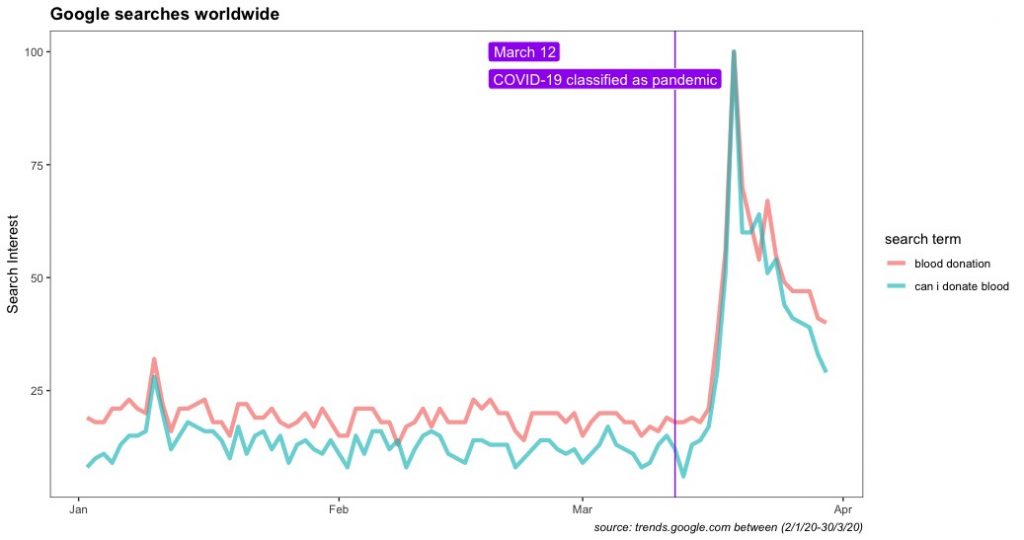
Looking more specifically at Australia and the UK, we can see that the global trend is also present in the searches in those two countries.
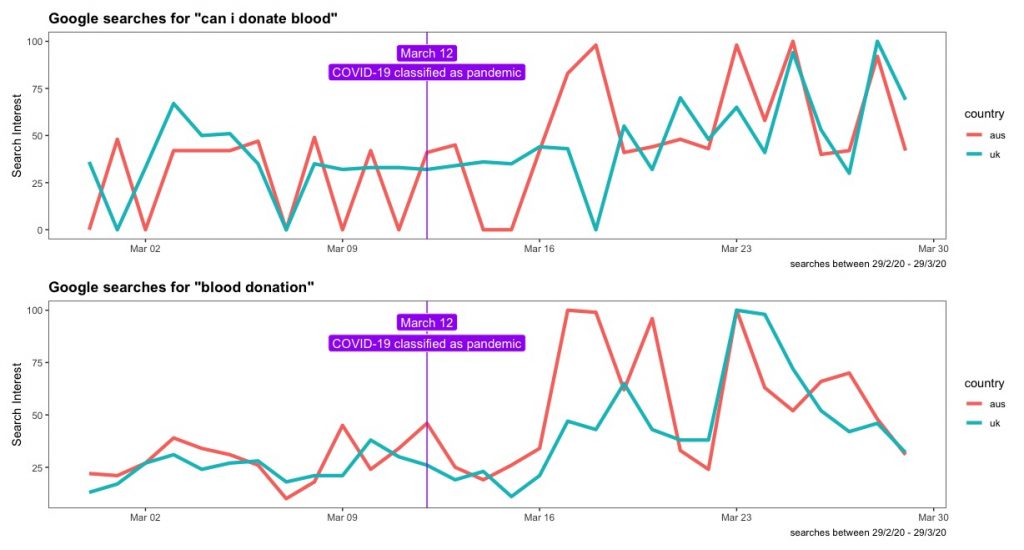
So, people are definitely interested in donating. Does this mean the call outs are working? Potentially yes. But from a would-be donor’s perspective deciding to donate during the coronavirus pandemic is more complex than deciding to donate in response to a natural disaster. Why? In a pandemic situation the want to help may be coupled with some fear. Donating blood is a social activity and this aspect typically attracts and motivates donors. However, during the coronavirus pandemic the fear of inadvertently infecting or becoming infected from others present may put people off. So, while people know the need for donors is great, the fear of coronavirus may prevent people from donating.
How can this fear be countered? Many years ago we conducted research examining donors’ reactions to a hypothetical avian influenza pandemic. We found that donors needed reassurance as to their safety if they were to go and donate blood. When we presented a hypothetical pandemic context to participants, those who felt less susceptible and more in control of their donation experience were more likely to intend to donate. Moving from the hypothetical to the very real pandemic situation we now find ourselves in, an analysis of tweets directed to Lifeblood in Australia (@lifebloodau) and NHSBT (@GiveBloodNHS) in England from March 17th to April 2nd suggests that donor safety represents a real and salient concern to those contemplating donating. Using a n-gram approach and focusing on trigrams (i.e., three-word sequences) to identify common key words in the tweets we can see that six out of the top seven trigrams focus on the safety of donor centres.
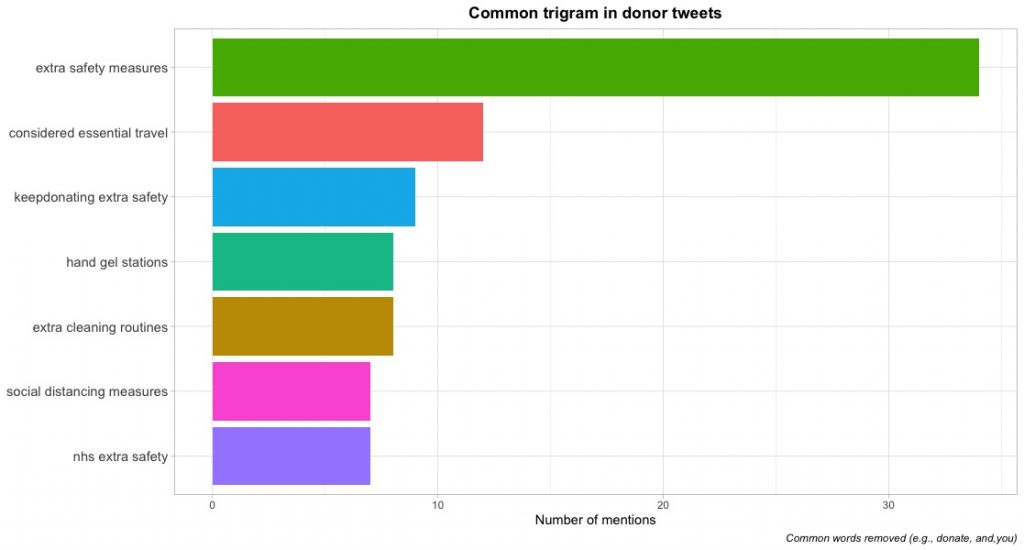
And the message of the safety of the donor centres being disseminated in response is resonating with the public. Looking at the most favourited tweets we can see that across Lifeblood and NHSBT the popular topics are all about the safety measures being taken.
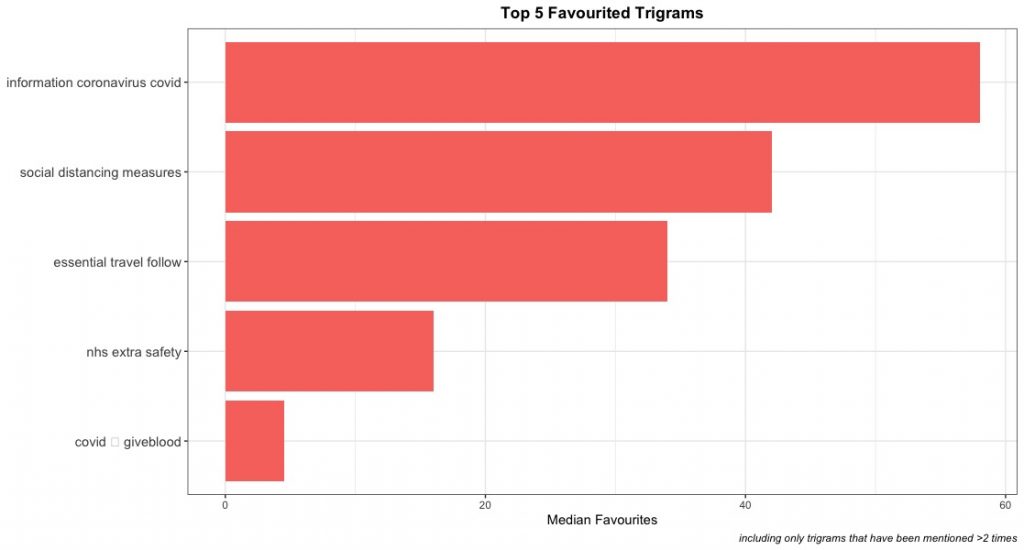
So, are would-be donors needs being met? Certainly, when you compare tweets from NHSBT and tweets from donors the top three topics are similar.
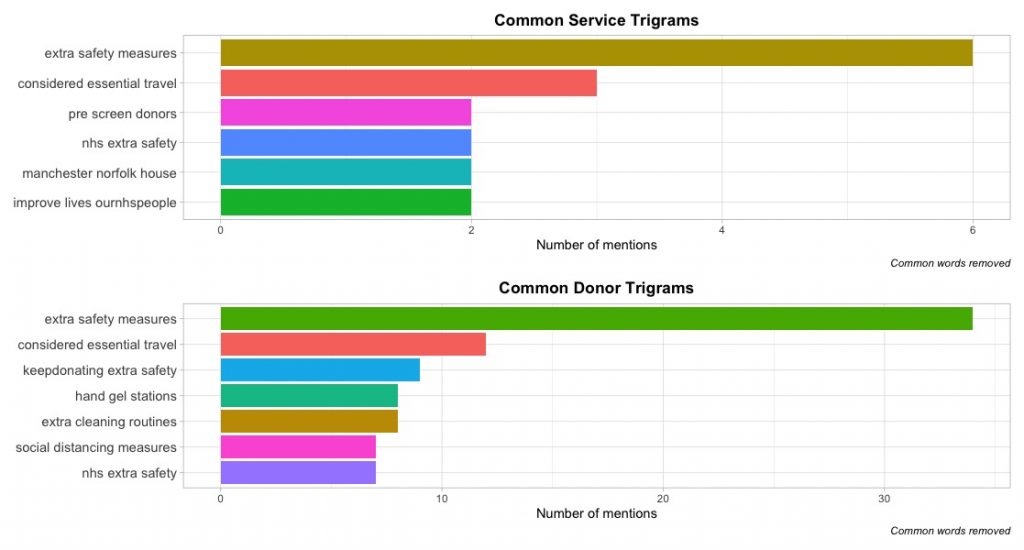
However, there is a subtle but important difference. Donors’ tweets are more specific than ‘extra safety measures’ – they are (understandably) very interested in the specifics of the safety measures that blood services are putting in place to protect them and other donors. We have all adjusted to a world of limited gatherings and social distancing, and this may contrast sharply with how people think of blood donation drives and centres. Quite simply, donors seem to want to know or even see the concrete actions being taken to protect them (and others) while they convert their want to help into a life-saving donation.
Michael Lam & Barbara Masser


![]()
